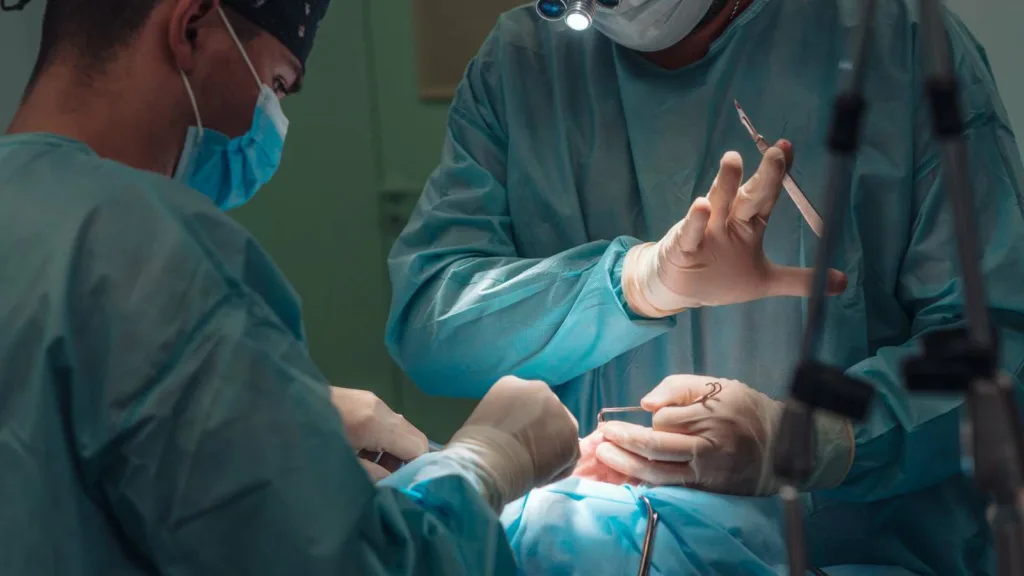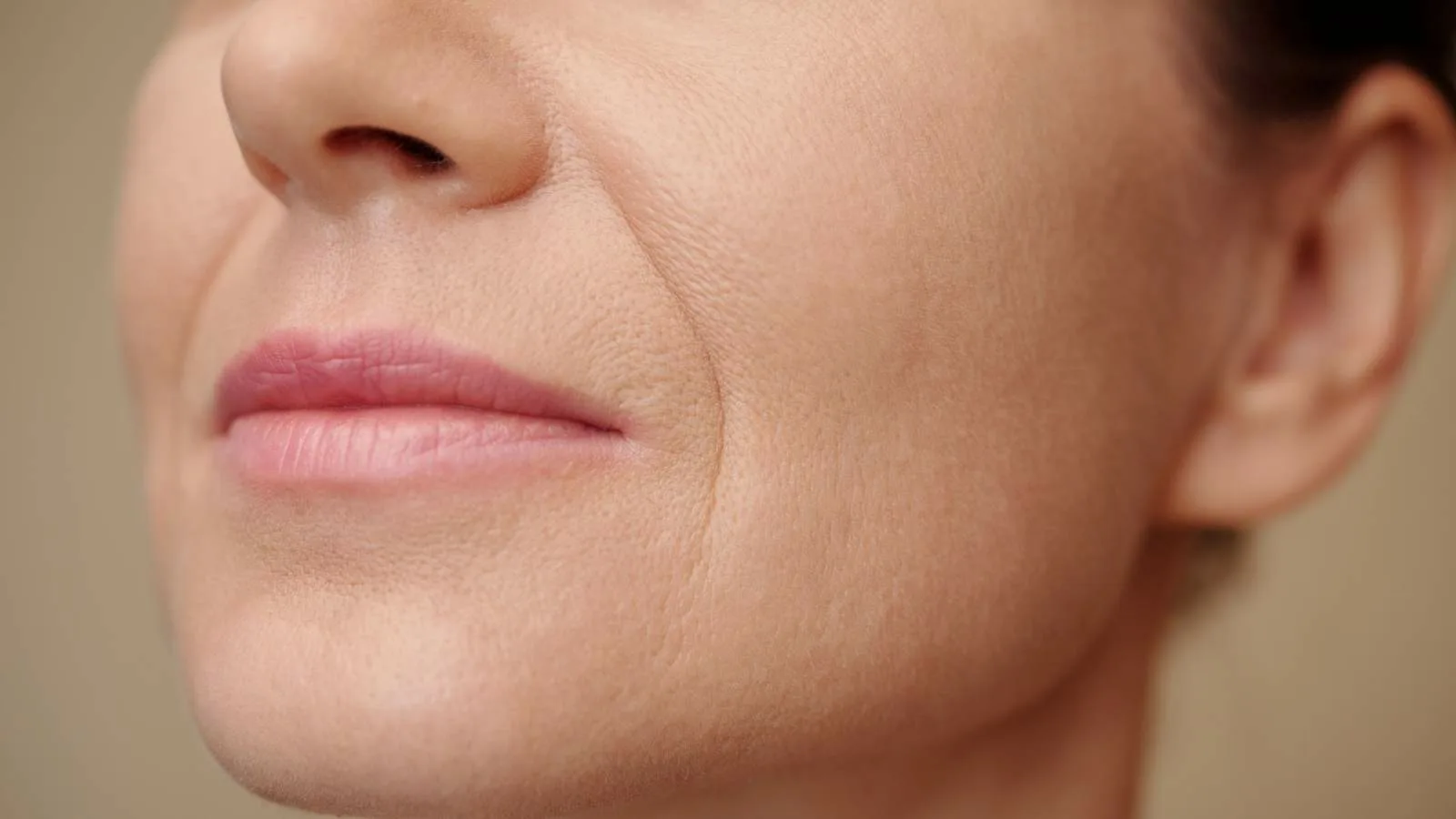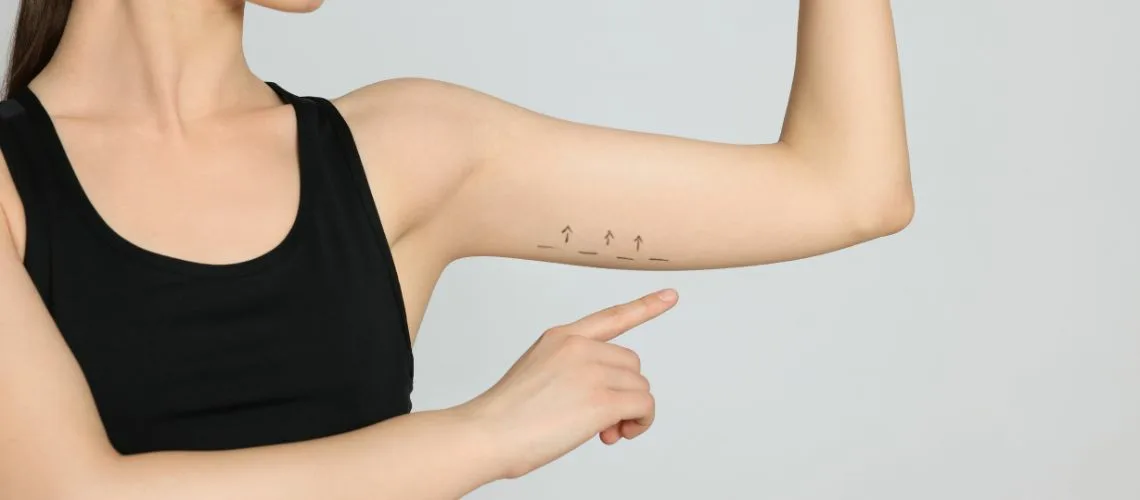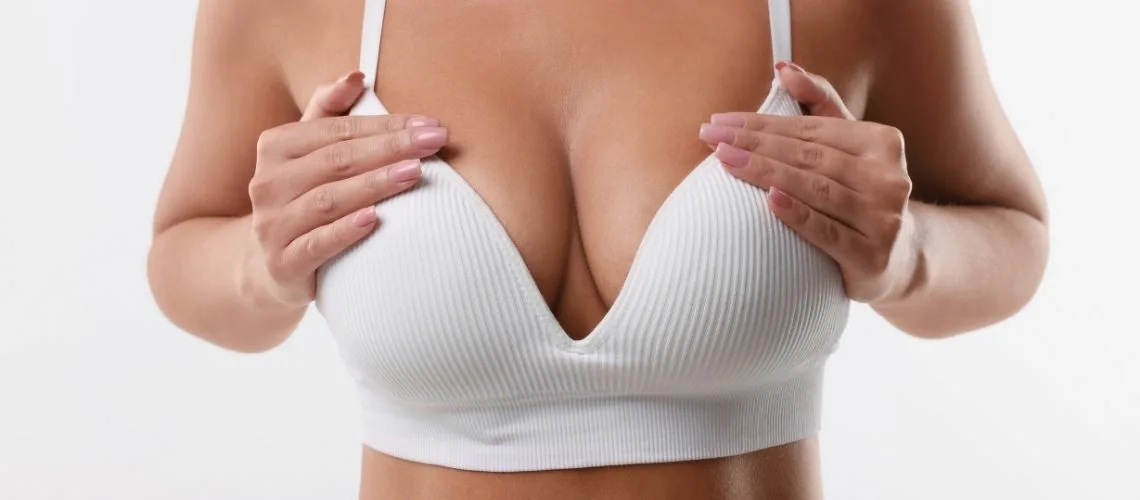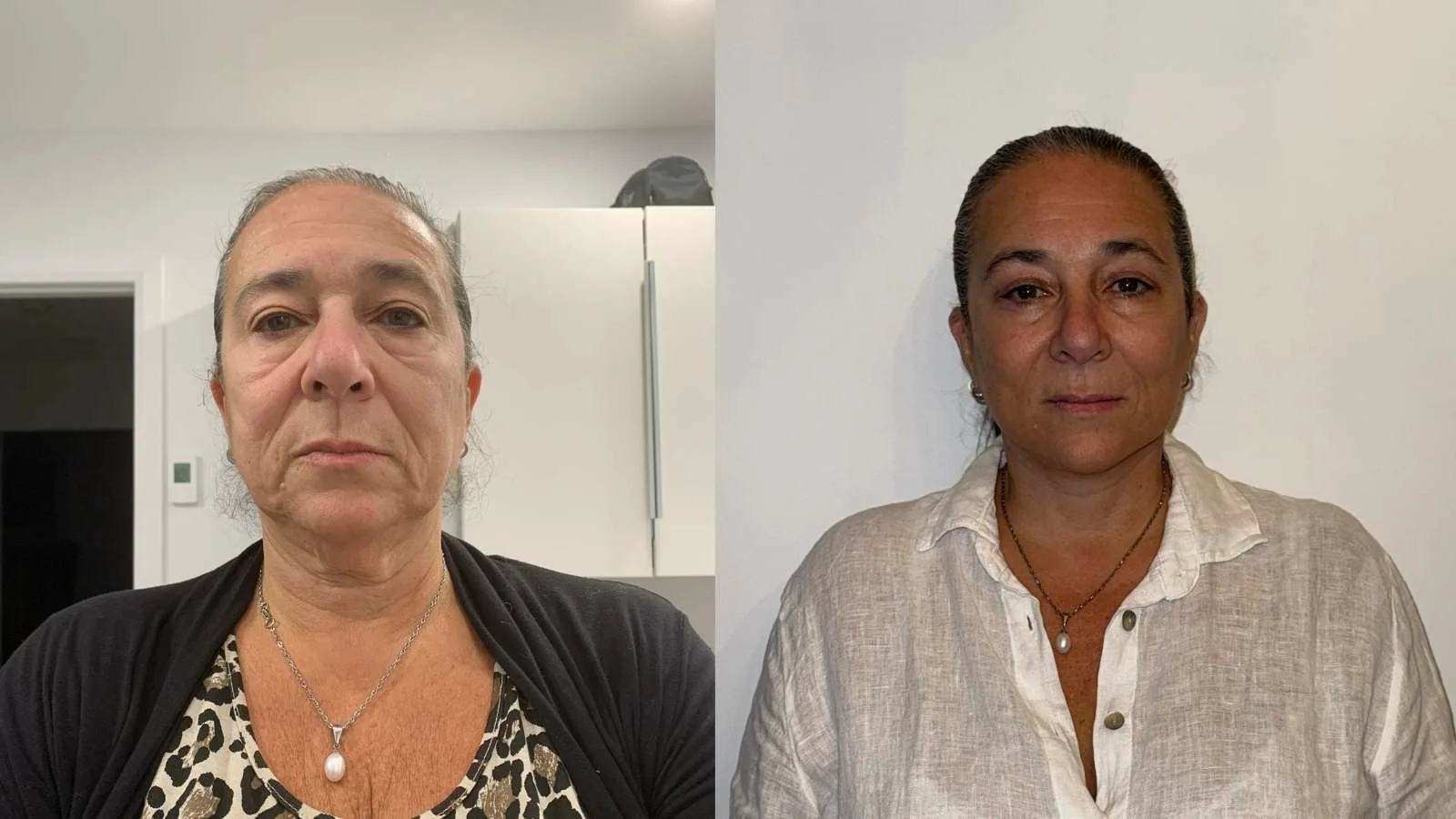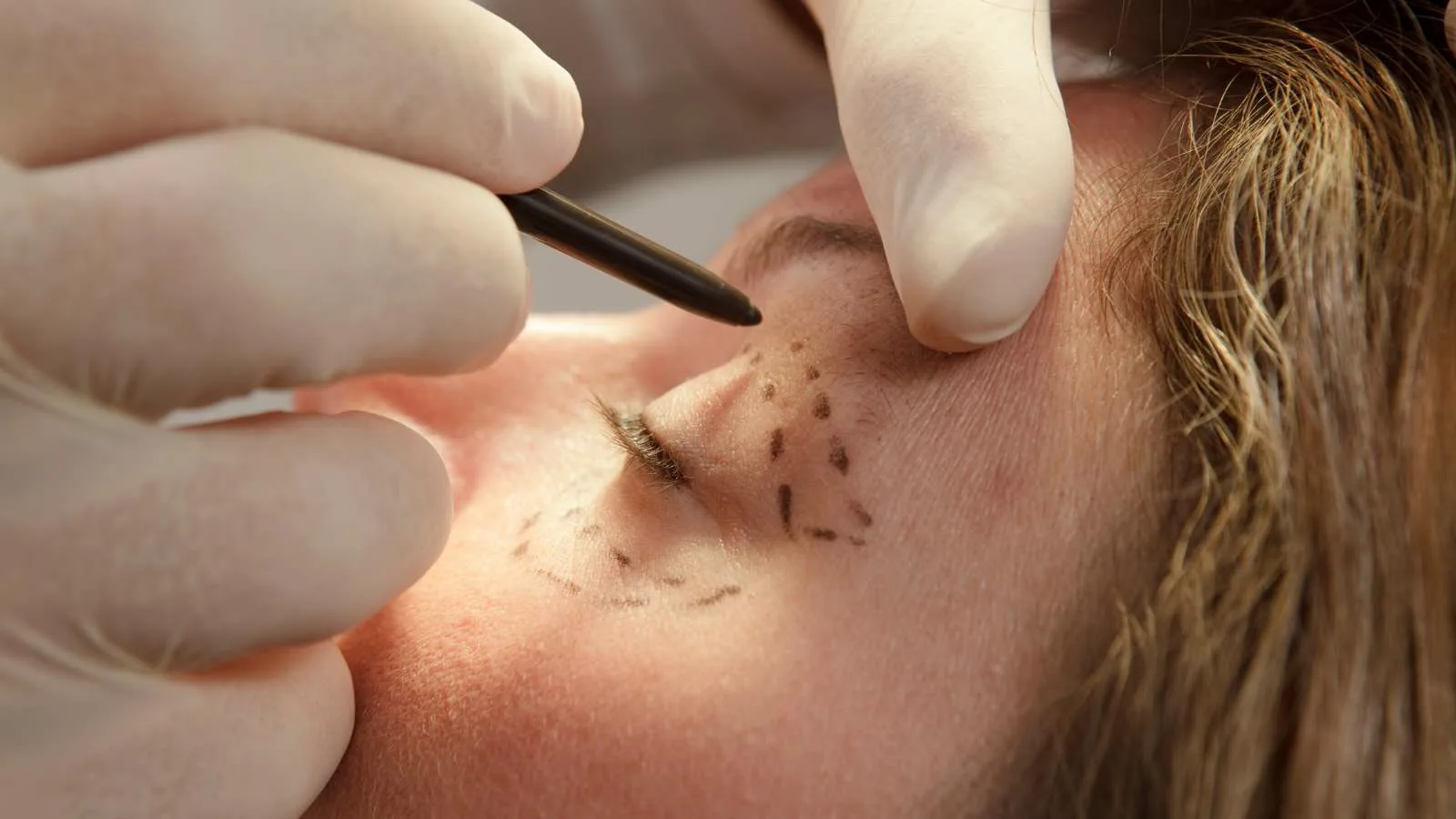Types of aesthetic surgery encompass procedures aimed at improving body appearance and proportions. Common categories include facial aesthetics, breast surgeries, and body contouring operations, each addressing specific patient concerns.
Facial aesthetic surgeries involve rhinoplasty, facelift, eyelid surgery, and brow lift. These procedures correct structural imbalances, reduce signs of aging, and enhance overall facial symmetry.
Breast aesthetic surgeries include augmentation, reduction, and lift operations. They address volume asymmetry, sagging, or size dissatisfaction, restoring proportion and improving patient self-confidence.
Body contouring aesthetic surgeries cover tummy tuck, liposuction, and buttock shaping. These operations target excess fat, skin laxity, and body disproportions, creating a harmonious silhouette.
What Are the Most Common Facial Aesthetic Surgeries?
Because the face is the most visible area to the outside world and the first focus of attention in social interaction, it is also one of the prime areas for aesthetic surgery. Imagine attending an event: People first notice your face, eyes, nose structure, or general expression. Therefore, facial aesthetic surgeries are procedures that can significantly influence a person’s self-confidence.
When listing the surgeries included in facial aesthetics, it’s possible to say that the most popular one is rhinoplasty (rhinoplasty). Since the nose is situated at the center of the face and has a vital role with its breathing function, problems related to breathing can be addressed simultaneously while correcting it for aesthetic purposes. Issues like a dorsal hump, drooping nasal tip, deviation, or wide nasal wings can be tackled through this operation. Most patients want a nose that is more proportional, in harmony with their facial features, and that allows comfortable breathing. In some people, minor touches suffice, while others may require more extensive bone and cartilage adjustments.
Another popular facial surgery is blepharoplasty, that is, eyelid surgery. Because the skin around the eyes is thin and delicate, it is among the first areas to show sagging and wrinkling with age. Sagging or bags in the eyelids can sometimes be a source of aesthetic dissatisfaction and can also narrow one’s field of vision. By removing excess skin and fat tissue through blepharoplasty, the aim is to achieve a fresher, brighter look. Many patients, especially those having excess tissue removed from the upper eyelids, say they feel as if they’ve “shed years of burden.”
A facelift is performed to correct the sagging that occurs over time in the face and neck areas. For individuals who feel young but whose cheeks and jawline have begun to show signs of aging, restoring a more youthful appearance is very important. A neck lift can be added during a facelift to achieve a more comprehensive result. In a sense, this operation can be seen as “defying time,” with the aim of making fine adjustments while preserving a natural look.
Brow lift surgery is also a notable option for those who want to change the overall expression of their face. Lines on the forehead, drooping eyebrows, or asymmetry can make a person look tired or sad. Lifting the eyebrows to the right position results in a livelier, younger, and more energetic appearance. This procedure can be combined with blepharoplasty, allowing a holistic rejuvenation of the upper face.
In some cases, patients may also be dissatisfied with the shape of their ears; we will explain this in detail under the otoplasty heading. If you think of facial aesthetics as a kind of painting, it’s often the dimensions of highly visible areas like the nose or eyelids that draw the most attention. Where needed, additional procedures such as chin augmentation (genioplasty) or cheek fillers can be added to achieve balance. In conclusion, among the most frequently chosen facial aesthetic surgeries are rhinoplasty, blepharoplasty, facelifts, and brow lifts. Each focuses on enhancing facial contours in a way that preserves naturalness and boosts the patient’s self-confidence.
Which Methods Are Popular in Body Contouring Surgery?
Body contouring refers to a set of operations designed to remove excess fat tissue, eliminate excess skin, or enhance the contours of the body. You can think of these procedures as a sort of “spring cleaning”: unwanted accumulations are cleared away, sagging areas are tightened, and the body outline is brought to the shape you desire. Rapid weight gain or loss, or pregnancy, may result in sagging skin that can be bothersome both aesthetically and comfort-wise.
One of the most popular procedures in this category is liposuction. Liposuction involves the removal of fat cells from the body using special cannulas. Alongside the traditional method, there are ultrasound-assisted, laser-assisted, and water-jet-assisted techniques. It’s commonly used to reduce localized excess fat in areas such as the abdomen, waist, hips, and back. If the overall body mass index is not excessively high and the skin’s elasticity is suitable, liposuction can yield very successful results. The use of a compression garment after surgery is typically recommended to speed up the reduction of swelling and help the tissues adapt to their new shape.
Abdominoplasty, known as a “tummy tuck,” is also popular. This operation provides a “clean-up and renewal” solution for people dealing with sagging skin and muscle laxity in the abdominal area. After pregnancy or significant weight loss, the abdominal wall muscles can weaken, and excess skin can form. For those patients, a flatter, tighter abdomen can be achieved. If the main excess skin is located below the navel, a mini abdominoplasty, which addresses a smaller section, might be chosen.
Body lifts, on the other hand, offer a more comprehensive approach. When there is a need to reshape a wide area like the waist, hips, and buttocks all at once, procedures called “belt lipectomy” or “lower body lift” come into play. These operations are often performed on patients who have undergone bariatric surgery, i.e., those who have experienced significant weight loss. The aim is to eliminate sagging skin and create a more proportional body.
Meanwhile, eliminating sagging skin on the arms and legs is also part of body contouring. Brachioplasty (arm lift) and thigh lift remove excess skin in the upper arms and upper legs, which can loosen over time or due to weight fluctuations. Especially after an arm lift, patients often feel more confident wearing short sleeves in daily life. Although incisions can leave visible scars, surgeons typically use the body’s natural contours to minimize their prominence.
What Types of Breast Aesthetic Surgeries Are There?
Breast aesthetics is a crucial area for both women and even men. Because this region influences the prominence of feminine or masculine contours in social and cultural norms, it has a central place in aesthetic surgery. While “breast augmentation” first comes to mind when thinking of breast aesthetics, in reality, there are various procedures in this field addressing different needs.
Breast augmentation is carried out by placing silicone or saline implants to achieve the desired breast size. Sometimes, a fat transfer (lipofilling) method provides a limited increase in volume, though this approach is more suitable for those wanting a moderate enlargement. The goal of augmentation is to achieve a natural appearance while meeting the patient’s desire for fullness. After the operation, patients usually return to their daily routines within a few weeks, but full healing and the final shape may take a few months.
Breast reduction and breast lift surgeries are equally common. Excessively large breasts can lead to shoulder and back pain, poor posture, and even psychological distress. With breast reduction surgery, excess tissue is removed, and if necessary, the position of the nipple is rearranged, resulting in a lighter and more aesthetically pleasing look. For many patients, it’s like “lifting a heavy weight off their shoulders,” offering marked improvements in posture, spine health, and overall quality of life. A breast lift (mastopexy) is aimed at tightening sagging breast tissue. Factors like age, gravity, pregnancy, or significant weight changes can cause the breasts to lose their shape. By lifting the nipple position and removing extra skin, the breasts achieve a perkier form.
Reconstructive surgery, on the other hand, aims to rebuild the breast tissue after situations like cancer or trauma. After a mastectomy (removal of the breast), reconstruction using implants or the patient’s own tissue (e.g., tissue flaps taken from the abdominal area) plays a vital role in helping patients regain a healthy body image. Nipple and areola reconstruction may also be part of these procedures, allowing patients to have a newly formed breast structure in place of what was lost and providing important psychological benefits.
In men, gynecomastia surgery is prominent. Due to hormonal imbalances, genetic predispositions, or weight issues, enlarged male breast tissue can be removed by liposuction or glandular tissue excision. This can be a liberating step both physically and psychologically.
Because breast aesthetics also closely impacts overall body proportion, the planning phase before surgery is extremely important. Factors such as a person’s height, shoulder width, and body mass index guide surgeons in choosing the right implant size or the appropriate surgical technique. The goal is to achieve a natural, healthy appearance while respecting the patient’s unique contours.
Are There Specific Aesthetic Surgeries for Men?
Although aesthetic surgery was for a long time seen as an area of interest primarily for women, men nowadays are also turning to these options to feel better and more confident. While the fundamental principles of aesthetic surgery are gender-neutral, male anatomy and aesthetic expectations can sometimes involve distinct considerations, making certain specialized approaches relevant.
Gynecomastia is a common condition among men, wherein the breast tissue grows due to hormonal, genetic, or weight-related factors. It affects many men socially, influencing everything from clothing choices to comfort while swimming or doing sports. Through gynecomastia surgery, excess fat can be removed via liposuction or glandular tissue can be surgically excised, resulting in a flatter, more masculine chest contour. For many patients, it means “the body finally aligning with what it’s meant to be.”
Another highly requested procedure among men is hair transplantation and restoration. The prevalence of male-pattern baldness, due to genetic and hormonal factors, makes FUE (Follicular Unit Extraction) or FUT (Follicular Unit Transplantation) popular. Using these methods, the patient’s own hair follicles are transplanted from a donor area to the thinning or completely bald regions. Beard and eyebrow transplants can also be performed with similar techniques. Hair transplantation can greatly boost men’s self-confidence and ease their social interactions.
In facial aesthetics, men often opt for rhinoplasty, blepharoplasty (eyelid surgery), and chin augmentation (genioplasty). A male nose is generally expected to have broader and stronger lines than a female nose, so the aim in rhinoplasty is to maintain or appropriately highlight the masculine character of the face. Blepharoplasty effectively eliminates a tired expression, while chin augmentation is chosen by male patients who want a more charismatic and pronounced jawline, particularly as seen in profile.
Body contouring surgery can also involve male-specific approaches. Defining the abdominal muscles (abdominal etching) or removing stubborn fat in the waist and back regions are procedures aimed at targeting resilient fat that doesn’t respond to exercise. This results in a more athletic body contour.
Minimally invasive treatments like Botox, fillers, and laser procedures are also gaining rapid popularity among men. Forehead lines, frown lines, or crow’s feet can lend an “overly serious” or “fatigued” expression. By using Botox and fillers, men too can achieve a younger and more energetic look—an approach becoming increasingly common. In short, while men’s aesthetic procedures are quite similar to those offered to women, personalized planning is key given differences in anatomy and aesthetic goals.
What Are Minimally Invasive (Less Invasive) Aesthetic Procedures?
Although going “under the knife” often comes to mind when thinking about aesthetics, minimally invasive methods have rapidly become widespread thanks to technological advancements. Summarized by the motto “small touches, big changes,” these treatments are usually quick to perform and allow returning to social life on the same day. Since they either don’t involve surgery or require very small incisions, recovery is comparatively more comfortable.
Among the most well-known of these is Botox injection. Commonly used to treat forehead lines, frown lines between the eyebrows, and crow’s feet around the eyes, Botox temporarily blocks nerve signals to muscles, reducing wrinkle formation. Its effect typically lasts 4–6 months. For instance, in deep lines caused by habitual frowning, Botox can act like a “protective shield.”
Filler injections, on the other hand, are used to shape facial contours, add volume to areas like the lips or cheekbones, or fill deep wrinkles. Hyaluronic acid–based fillers typically pose a low allergy risk because their composition closely resembles substances already found in the body. This is an ideal solution for those desiring a younger, firmer look without undergoing surgery. The procedure involves very fine needles, making it quite comfortable for the patient.
Laser- and radiofrequency-based skin rejuvenation treatments also fall under minimally invasive procedures. These technologies generate controlled heat under the skin, stimulating collagen production. They’re especially useful for mitigating issues such as acne scars, fine wrinkles, or skin discolorations. Think of it like “scrubbing” the skin: When the top layer of the skin is precisely removed with lasers, the goal is for a fresher, smoother layer to emerge underneath.
Chemical peels, dermabrasion, and microneedling also belong in this group. Chemical peels utilize various acid solutions to reduce dead skin cells, fine lines, and discoloration on the skin’s surface. Dermabrasion mechanically sands down the top layer of the skin. Microneedling creates tiny channels in the skin to trigger renewal. All of these procedures typically allow a rapid return to daily activities.
Kybella, a deoxycholic acid injection, is another minimally invasive technique developed to dissolve excess fat under the chin. It’s less risky and easier to apply compared to surgical liposuction, though multiple sessions may be needed. This is an important consideration for those who opt for this method.
What Is Vulvovaginal Aesthetic Surgery, and Why Is It Performed?
Vulvovaginal aesthetic surgery encompasses all procedures performed on the female genital area. These interventions aim to address both aesthetic concerns and functional issues. Sometimes, women may be dissatisfied with the appearance of the inner (labia minora) or outer lips (labia majora). Labiaplasty involves removing excess tissue to achieve a more symmetrical and aesthetically pleasing look. This operation is not solely for appearance; it can also solve functional problems such as discomfort when wearing tight clothing, friction during sports, or physical pain during sexual intercourse.
Another procedure, known as vaginoplasty, is performed to tighten the vaginal canal. Especially after childbirth or with age, the vaginal muscles can become lax. This relaxation can reduce sexual satisfaction and, in some cases, lead to issues like urinary incontinence. Vaginoplasty tightens these muscles and narrows the vaginal opening, potentially leading to significant improvements in physical comfort and self-confidence.
Clitoral hoodoplasty, meanwhile, corrects excess skin around the clitoris. Some women may experience difficulty with hygiene or arousal due to skin folds over the clitoris. This procedure removes excess tissue and ensures that the clitoris is revealed in a more balanced way. Similarly, the mons pubis (the pubic mound) can be flattened with liposuction or surgical intervention. Common reasons for such procedures include a noticeable bulge in tight clothing or aesthetic concerns.
Today, laser- and radiofrequency-based “vaginal rejuvenation” treatments are also common. These methods revitalize the vaginal tissue by boosting collagen production and by using localized heat to tighten the area. They can also help alleviate issues such as vaginal dryness or mild urinary incontinence after menopause.
Vulvovaginal aesthetics can help reduce women’s anxieties about body image and address functional problems. For some, these procedures mark a turning point for “inner comfort and confidence.” However, as with any surgical intervention, doctor-patient communication, realistic expectations, and careful management of the recovery process are essential. It’s also important to remember that the genital region has a wide range of normal anatomical variations. Thus, the decision to operate should be based on personal satisfaction and medical needs.
How Does Rhinoplasty Improve Facial Features?
Rhinoplasty, that is, rhinoplasty, is one of the most popular facial surgeries evaluated from both an aesthetic and functional perspective. Positioned in the middle of the face, the nose immediately draws attention. Even a small bump or deviation can sometimes significantly affect a person’s self-confidence. Additionally, the shape of the nose directly influences overall facial symmetry and proportion, making it a critical component of aesthetic surgery.
During rhinoplasty, numerous changes can be made, such as lifting the nasal tip, correcting a hump or bony protrusion, narrowing the nostrils, or correcting a septal deviation. You can see how the shape of someone’s nose strongly affects their general facial expression. For instance, a person with a very drooping nasal tip may unintentionally appear more “tired” or “stern.” Meanwhile, if the nasal tip is lifted slightly, the face can look friendlier or more energetic.
One of the biggest advantages of this operation is the ability to correct breathing-related anatomical problems at the same time. Issues like nasal obstruction or snoring can be addressed by septoplasty (correcting a deviated septum), while the aesthetic adjustments are performed simultaneously. As a result, patients gain both cosmetic improvements and enhanced breathing quality.
Of course, rhinoplasty must also be in harmony with the other areas of the face. If, after a nose operation, someone feels that there’s now a disproportion in the chin or cheeks, these can be balanced with additional interventions. For example, if the chin is significantly recessed, no matter how beautifully shaped the nose might be, the expected overall facial harmony may not be achieved. Proper patient evaluation is therefore crucial in preoperative planning.
Recovery after rhinoplasty varies from person to person, but bruising and swelling typically decrease significantly within 1–2 weeks. In the first few days, breathing difficulties can be an issue, yet they usually improve as time passes. It may take months for the final shape of the nose to fully settle. Ultimately, an aesthetically pleasing nose that is in proportion and looks natural can complete a person’s facial features like a puzzle piece clicking into place—heightening self-esteem and feelings of happiness.
What Are the Techniques for Liposuction (Fat Removal)?
Liposuction is one of the most popular surgical methods developed to reduce stubborn fat deposits in specific areas of the body. No matter how much diet and exercise some people do, fat in certain zones may remain “immovable.” Liposuction offers a targeted intervention for this problem. If we liken the body to a sculpture, liposuction sculpts by chiseling away the excesses.
In the traditional liposuction technique, a solution known as tumescent fluid (physiological saline mixed with lidocaine and adrenaline) is injected into the fat tissue. This reduces both bleeding and pain, making the fat easier to remove. Then, using thin cannulas, the loosened fat is vacuumed out. Thanks to technological advances, ultrasound-assisted (UAL) and laser-assisted (LAL) liposuction methods have also been developed. In these approaches, fat is first broken down by ultrasound waves or laser energy before being suctioned out.
Ultrasound-assisted liposuction is particularly effective for areas with tougher, more fibrous tissue, such as the back or male breast tissue in gynecomastia. Laser-assisted liposuction may be preferred in certain cases because it can additionally tighten the skin. Water-jet-assisted liposuction (WAL) is yet another technique; here, a pressurized saline solution loosens the fat tissue before it’s vacuumed out. This method can cause less trauma to surrounding tissues and often results in a faster recovery.
Liposuction is commonly used on the abdomen, waist, hips, thighs, and arms. However, it can also be applied to smaller areas such as under the chin or around the knees. It’s important to emphasize that liposuction is not a weight-loss method but a way to refine body contours by reducing resistant fat deposits. Hence, ideal candidates are generally people near normal weight who have localized fat in specific areas.
The recovery period typically takes a few weeks. Pain, swelling, and bruising in the early days are normal, and compression garments help the swelling subside more quickly. Patients should maintain a balanced diet and regular exercise routine to preserve their results. Otherwise, although fat cells won’t accumulate excessively again in the treated areas, other parts of the body may gain weight more easily.
Is It Possible to Correct Ear Appearance Through Aesthetic Surgery?
Yes. Ear aesthetics, or otoplasty, can correct the appearance of the ears. During childhood, prominent ears (often referred to as “lop ears”) can unfortunately become a target for teasing, leading to confidence issues. Thus, otoplasty can be performed from childhood onward (usually starting around ages 5–6), and doing it at an early age can be socially and psychologically protective.
Otoplasty is aimed at positioning the ears closer to the head or reshaping the folds of the ear. Typically, an incision is made behind the ear during the procedure. This allows reshaping of the cartilage and fixing it back. In some cases, the “concha” area, which lacks clearly defined folds, may also be reshaped. Otoplasty is not only for protruding ears but can also be done to correct asymmetrical ears or congenital ear deformities.
Local or general anesthesia may be chosen depending on the patient’s age and the extent of the procedure. The surgery lasts around 1–2 hours. Afterward, patients wear a special dressing or headband for a few weeks to protect the ears from impact. Mild pain and sensitivity are normal during the healing process and can typically be controlled with well-managed pain relief medication.
Otoplasty has positive effects on a person’s daily life. It can significantly reduce peer bullying or teasing among children, while adult patients can freely opt for different hairstyles, wear glasses comfortably, or choose earrings without worry. Since the surgical scars are hidden behind the ear, they generally aren’t visible. Hence, otoplasty is considered one of the least “noticeable” yet most impactful aesthetic surgeries.
What Options Are Available for Hair Transplantation and Restoration?
Hair is regarded as a person’s most prominent accessory, and hair loss can be a major source of stress for both men and women. Today, this issue can largely be addressed via different techniques. When discussing hair transplantation, two main methods typically come to mind: FUT (Follicular Unit Transplantation) and FUE (Follicular Unit Extraction).
In the FUT method, a strip of scalp is removed from the donor area at the back of the head. This strip is then dissected into individual follicular units under a microscope, which are transplanted into the recipient area. The advantage of FUT is that a large number of follicles can be obtained at once, providing dense coverage. However, there is a risk of leaving a thin linear scar in the donor site.
In the FUE method, although the donor site is again usually the back of the head, hair follicles are extracted individually using special micro-punches rather than removing a strip. This results in tiny, dot-like scars instead of one long scar, and these small marks are generally unnoticeable once hair grows back. FUE typically offers a more comfortable healing process, although the surgery can take longer if a wide area needs to be transplanted. Robotic FUE systems introduced in recent years aim for even more precise and faster extraction and transplantation of follicles.
Aside from transplantation, additional methods such as “hair mesotherapy,” “PRP (Platelet Rich Plasma)” applications, and “stem cell treatments” can support natural hair growth. Especially before and after transplantation, these methods can help transplanted follicles establish themselves and can strengthen existing hair.
The success of hair transplantation depends on several factors, including the donor area’s hair density, the thickness or curliness of the hair, the size of the recipient area, and the expertise of the team performing the procedure. The newly transplanted hair may shed a few months after the operation due to the natural growth cycle, but this process is typically temporary. Around 6–12 months later, the transplanted follicles start producing new hairs that will remain long-term.
Women can also benefit from hair transplantation, but because female-pattern hair loss often occurs in a more diffuse manner, planning can be slightly more challenging. Still, with correct patient selection and proper technique, successful outcomes can be achieved for women as well. In short, hair transplantation offers a realistic and permanent solution for areas of hair loss on the scalp, significantly boosting individuals’ self-confidence and enhancing their social lives.
How Effective Are Chemical Peels and Dermabrasion in Skin Rejuvenation?
The skin is the body’s largest organ and the first line of defense in direct contact with the external environment. Over time, sun exposure, environmental factors, and aging can cause various spots, lines, and marks to appear on the skin’s surface. Chemical peels and dermabrasion are two highly effective methods of skin renewal targeting these issues. Both work by peeling away the damaged or dead cells in the top layer, allowing fresher, healthier skin to emerge from beneath.
As the name suggests, a chemical peel involves applying solutions containing various acids to the skin. Glycolic, salicylic, and trichloroacetic acids are different active ingredients that penetrate various depths of the skin. This procedure is ideal for reducing fine wrinkles, evening out uneven skin tone, diminishing acne scars, and enhancing overall skin quality. Peels are categorized as superficial, medium, or deep, depending on their intensity. For instance, someone might return immediately to daily life after a superficial peel, whereas deep peels require a longer recovery.
Dermabrasion is a mechanical method comparable to “sanding” the upper layer of the skin with a specialized instrument. It is particularly effective for more severe acne scars, scar tissue, or extensive sun damage. The recovery period can be slightly longer than that for chemical peels, but if the patient is well-suited to the procedure, the results can be highly satisfying.
Common side effects following these treatments include redness, sensitivity, and peeling of the skin. During the first weeks, it is crucial to protect your skin from sun exposure, use moisturizers, and maintain a careful skincare routine; otherwise, unwanted color changes or irritation may occur. As the tissues regenerate, the skin becomes smoother, more evenly toned, and more radiant.
Chemical peels and dermabrasion are attractive options for those looking to improve their skin without resorting to more invasive surgeries. Naturally, both treatments have their risks and specific indications. For example, they may be unsuitable for individuals with active infections or severe skin diseases, and people with darker complexions need to take into account the risk of hyperpigmentation. However, when performed on the right patients and with the right techniques, these methods can give the skin a “spring cleaning,” resulting in a younger-looking complexion.
Which Procedures Fall Under Aesthetic Genital Surgery?
Aesthetic genital surgery includes various procedures for both women and men. In women, labiaplasty and vaginoplasty are the most well-known examples in this category. As discussed previously, labiaplasty involves the aesthetic and functional shaping of the inner or outer vaginal lips, while vaginoplasty tightens the loosened vaginal tissue to improve sexual satisfaction and comfort. Depending on the need, procedures like clitoral hoodoplasty, mons pubis liposuction, or pubic lift may be performed.
In men, operations such as penis lengthening, penile girth enhancement, and scrotum (testicular sac) aesthetics fall within the scope of aesthetic genital surgery. In penis lengthening surgery, the portion of the penis usually inside the body can be released surgically to add visible length; for thickness, fat injections or fillers may be used. There are also cases where testicular implants are used or excess scrotal skin is removed to achieve a neater, more aesthetic appearance.
The goal of all these procedures is to offer both visual satisfaction and functional improvements. For instance, in labiaplasty, trimming enlarged inner lips can reduce friction-based pain or irritation and discomfort during sexual activity. After vaginoplasty, some women report decreased urinary incontinence. In men, correcting the scrotum’s appearance can reduce everyday discomfort caused by noticeable sagging or asymmetry.
Perhaps the most significant part of these surgeries is shedding light on subjects that are sometimes approached with embarrassment and raising awareness about them. Aesthetic genital surgery is not purely about personal whim or exaggerated demands; many patients seek these procedures with legitimate, tangible complaints and derive substantial benefits from them. Of course, surgical risks and the delicate nature of the postoperative phase must be considered. Because the genital region has a rich network of blood vessels and nerves, potential infection risk, the healing process, and the timeline for resuming sexual activity all require detailed explanation.
What Are the Latest Technological Developments in Aesthetic Surgery?
Aesthetic surgery is one of the branches of medicine that adapts most rapidly to innovation. Today, a range of new technologies offers faster recovery, fewer scars, and more predictable results. These developments—from robotic surgery to personalized implants designed with 3D printers—significantly enhance patient satisfaction.
For example, robotic hair transplant systems (like ARTAS) provide millimetric precision in extracting and transplanting hair follicles. Such robotic arms remove follicular units more quickly and evenly, minimizing trauma in the donor area. Similarly, robotic-assisted liposuction or endoscopic techniques for face and neck lifts are becoming more widespread with each passing day.
Three-dimensional imaging and simulation technologies have also created a revolution in aesthetic surgery. Before the operation, a patient’s facial or body structure can be modeled using 3D scanning devices, enabling them to visualize potential post-surgery outcomes. While no simulation is 100% accurate, it strengthens communication between the surgeon and the patient and helps form realistic expectations.
There are also exciting advancements in the field of “stem cells and fat transfer.” In many clinics, autologous fat injections enriched with the fat’s own stem cells (SVF: Stromal Vascular Fraction) are routinely performed. This approach is highly appealing to those wishing to correct volume deficiencies in the breasts or face through a natural method. Because stem cells contribute to tissue regeneration, it aims for more prolonged and higher-quality results.
Progress in laser and radiofrequency technologies has revolutionized skin tightening and skin rejuvenation applications. Fractional lasers penetrate deeper layers to stimulate collagen, diminishing scars, spots, and wrinkles, while “smart” radiofrequency devices heat tissue at certain depths to achieve tightening and lifting. Some devices use multiple wavelengths or combine these methods with microneedling.
Implant materials used in aesthetic surgery are also evolving. Older silicone implants have been replaced by newer, shape-memory, gel-like implants that feel more natural. This reduces the risks of leakage or deformation and offers a more natural feel. Meanwhile, new polymer-based substances for fillers and implants in body sculpting are on the rise.
Lastly, telemedicine (remote consultation) technology has found a place in aesthetic surgery as well. Patients with busy schedules or those living in remote areas can consult surgeons online for initial evaluations and continue follow-up care the same way. Although it can’t completely replace a physical examination, such digital tools largely eliminate barriers of time and distance.

Op. Dr. Erman Ak is an internationally experienced specialist known for facial, breast, and body contouring surgeries in the field of aesthetic surgery. With his natural result–oriented surgical philosophy, modern techniques, and artistic vision, he is among the leading names in aesthetic surgery in Türkiye. A graduate of Hacettepe University Faculty of Medicine, Dr. Ak completed his residency at the Istanbul University Çapa Faculty of Medicine, Department of Plastic, Reconstructive and Aesthetic Surgery.
During his training, he received advanced microsurgery education from Prof. Dr. Fu Chan Wei at the Taiwan Chang Gung Memorial Hospital and was awarded the European Aesthetic Plastic Surgery Qualification by the European Board of Plastic Surgery (EBOPRAS). He also conducted advanced studies on facial and breast aesthetics as an ISAPS fellow at the Villa Bella Clinic (Italy) with Prof. Dr. Giovanni and Chiara Botti.
Op. Dr. Erman Ak approaches aesthetic surgery as a personalized art, tailoring each patient’s treatment according to facial proportions, skin structure, and natural aesthetic harmony. His expertise includes deep-plane face and neck lift, lip lift, buccal fat removal (bichectomy), breast augmentation and lifting, abdominoplasty, liposuction, BBL, and mommy makeover. He currently provides safe, natural, and holistic aesthetic treatments using modern techniques in his private clinic in Istanbul.

